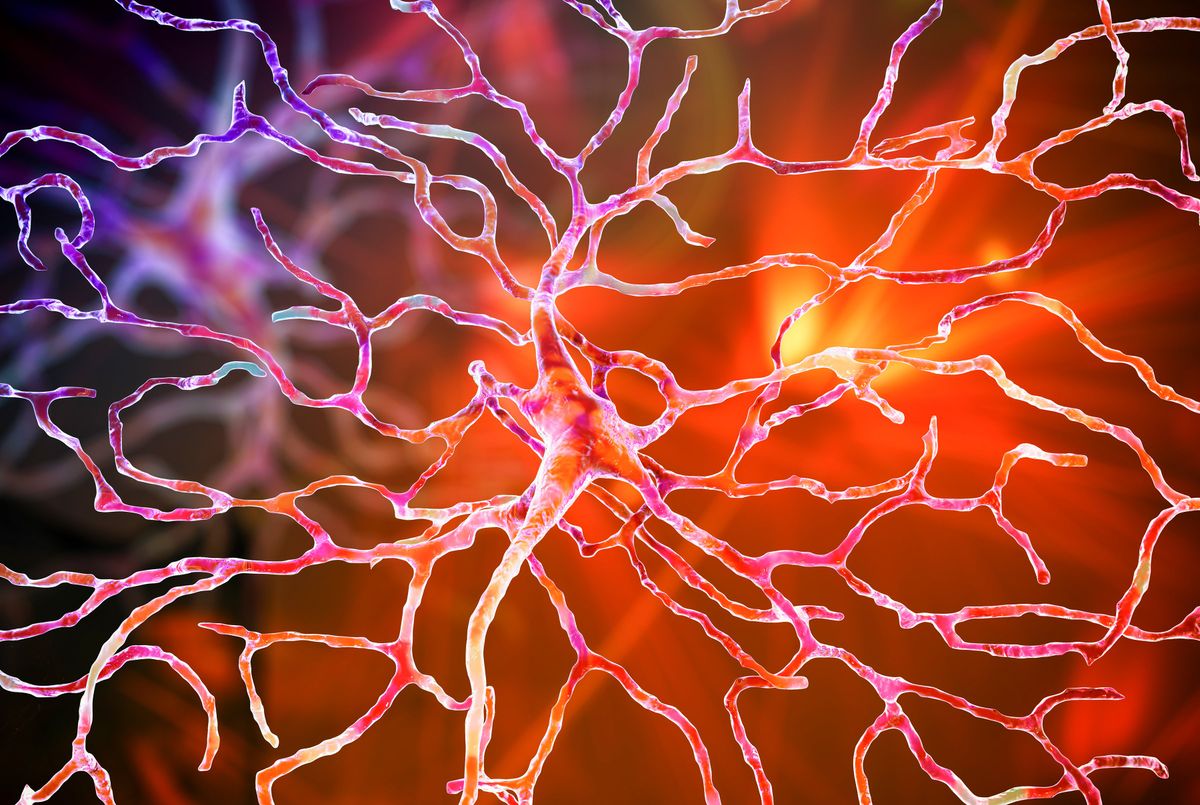Finding ways to interface electronics with our biology could help treat neurodegenerative diseases, improve prosthetics, and even lead to novel computing technologies. A chip made from organic electronics that can imitate the way the retina works brings that goal a step closer, its creators say.
Hooking conventional electronics up to biological systems can be challenging because they are not biocompatible and their rigid structures don’t marry well with soft, living tissue. Organic electronics have emerged as a promising alternative as they can be made from flexible polymers that aren’t toxic and don’t illicit an immune response. Now, researchers have created a new organic electronic device that can react to light, transmit signals using ions, and remember the amount of signal that has previously flowed through it, which mimics the way neurons in the retina operate.
Described in a paper in Nature Communications, the device is currently just a proof of concept. Ottavia Bettucci, an assistant professor of organic chemistry at the University of Milano-Bicocca and coauthor of the paper says that in the future the technology could potentially be used to create neural implants designed to treat a variety of conditions such as Parkinson’s disease or Alzheimer’s disease. Or it could be used for retinal implants to treat some forms of blindness.
“In all the pathologies in which the neural communication is not working in a proper way, our material and our device could help in restoring this interaction,” she says.
The materials used to build the device were chosen with the goal of being implanted in the body.
The researchers describe the device they’ve built as an organic photoelectrochemical transistor. It consists of two thin films of conductive polymer deposited onto a glass substrate, which are connected by an electrolyte. One of the two polymer films acts as a channel between source and drain electrodes, while the other acts as a gate.
Applying a voltage to the gate causes ions to migrate from the electrolyte into the channel changing it’s conductivity. But the researcher also modified the polymer at the gate by integrating photosensitive molecules, which means the gate can also be controlled by light. Crucially, the materials used to build the device were chosen with the goal of being implanted in the body.
“The gate terminal is just a complete organic biocompatible material, which potentially can make these be interfaced with biological cells.” says Francesca Santoro, a professor of neuroelectronic interfaces at RWTH Aachen University, in Germany, and coauthor of the new study. “The fact that it’s made of polymer materials also makes it very good for being integrated into flexible substrates.”
The device shares key characteristics with biological neurons, says Santoro. In addition to using ions to modulate the electrical behavior of the device, the response to light is intensity dependent, much like biological photoreceptors. And the device was able to mimic the way connections between neurons strengthen or weaken over time based on the amount of activity they see—a key ingredient in learning.
The researchers showed that if the gate was subjected to two light pulses less than 5 seconds apart, a higher current was seen after the second pulse. But if they applied 500 light pulses in a row, 1 second apart, the conductivity of the channel fell with each pulse. Once the light signal was removed, the conductivity gradually recovered, but it still hadn’t returned to normal after more than half an hour.
This is similar to how things work in biology, says Santoro, where two complimentary processes known as short-term plasticity and long-term plasticity operate over different timescales to modulate the strength of neural connections. “This is important because a number of patterns that we have in our visual recognition system are also result of a long-term interaction, not just short-term,” she says.
While going from a proof of concept to a practical device will be a long road, Bettuci says the team made sure to use cheap, common materials and also significantly simplified the process of synthesizing the light-sensitive polymer. The main barrier to creating devices that can be implanted in the body will be switching from a glass substrate to something that is flexible and biocompatible, says Bettuci.
The current device also operates much slower than biological neurons, says Santoro, and it is only able to react to biological signals, not transmit them. That’s why her group is already working on a follow-up device that can release chemical signals to create a feedback loop with biological systems.
As well as holding promise for developing fully organic neural implants, Santoro thinks the technology could also be used to interface conventional electronics with biological systems. She has several projects looking at how these artificial neurons could be used to drive prosthetics and the team is also working with an ophthalmologist who has experience with retinal implants.
“He can really give us good direction on where we can make improvements to the platform, so it could potentially be integrated into existing or a new classes of implantable retinal devices,” she says.
Edd Gent is a freelance science and technology writer based in Bengaluru, India. His writing focuses on emerging technologies across computing, engineering, energy and bioscience. He's on Twitter at @EddytheGent and email at edd dot gent at outlook dot com. His PGP fingerprint is ABB8 6BB3 3E69 C4A7 EC91 611B 5C12 193D 5DFC C01B. His public key is here. DM for Signal info.



